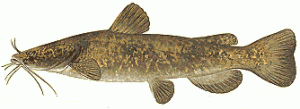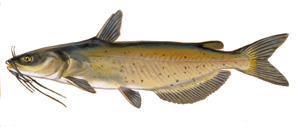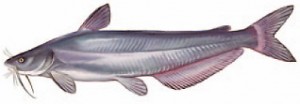We’ve all been doing it lately — dealing with the weather. It’ll be nice for a couple of days and then turn cold. At the same time it’ll rain like the devil for a day or so and then the wind picks up and everything dries out in a matter of hours.
There’s no reason to let that frustrate you. It’s spring in the Midwest. It’s been doing this for a thousand years past and will probably be doing it a thousand years into the future. We anglers have to learn to deal with it.
Spring cold fronts aren’t that big a deal if you stop and think about it for a minute. They tend to slow the bite down but only for a day or so. After that things will return to normal.
I’ll admit that the front that passed through this weekend was kind of disappointing. It happened on a Friday night and messed up a lot of weekend fishing trips for a lot of guys. Still, things will be back to normal by Tuesday or Wednesday. Unless something drastic happens next weekend should be prime for spring crappie and early bass.
Rain isn’t much different. True, it muddies the creeks and turns then into something that looks like chocolate milk. But they clear just as fast. No one seems to know where the crappies and the bass go when it gets ugly in the creeks but we all know that they return — with a ravenous appetite — as soon as the water clears.
And remember, rain doesn’t fall the same everywhere. In places it’ll come down really fast. Go a mile east or west, however, and it’s likely a different story. Just because it’s raining hard in your neighborhood doesn’t mean the creeks up the road are nasty. Check them out. They may be just fine.
Fish with the weather rather than spend your time cursing it. You’ll be a happier angler and catch a lot more fish.

 Flatheads are by far the most exotic and perhaps the most popular species in the Ohio River. Flatheads can reach weights in excess of 100 pounds. Typical color ranges from brown to green with a white belly. They tend to develop lighter colors in clearer water and darker colors in darker waters.
Flatheads are by far the most exotic and perhaps the most popular species in the Ohio River. Flatheads can reach weights in excess of 100 pounds. Typical color ranges from brown to green with a white belly. They tend to develop lighter colors in clearer water and darker colors in darker waters. Channel cats are somewhat smaller than flatheads and are known to eat almost anything. They have more taste sensing organs than flatheads and blues, although blues aren’t very far behind. They feed almost entirely by smell and taste.
Channel cats are somewhat smaller than flatheads and are known to eat almost anything. They have more taste sensing organs than flatheads and blues, although blues aren’t very far behind. They feed almost entirely by smell and taste. Blue cats are the monsters of the river. Who can forget the old-time pictures of 100 pound plus blues being held up by local fisherman when the dams were being built? (Some writers claim they reached 200 pounds plus just before and during the Great Depression. That seems unlikely, but who knows for sure?)
Blue cats are the monsters of the river. Who can forget the old-time pictures of 100 pound plus blues being held up by local fisherman when the dams were being built? (Some writers claim they reached 200 pounds plus just before and during the Great Depression. That seems unlikely, but who knows for sure?)